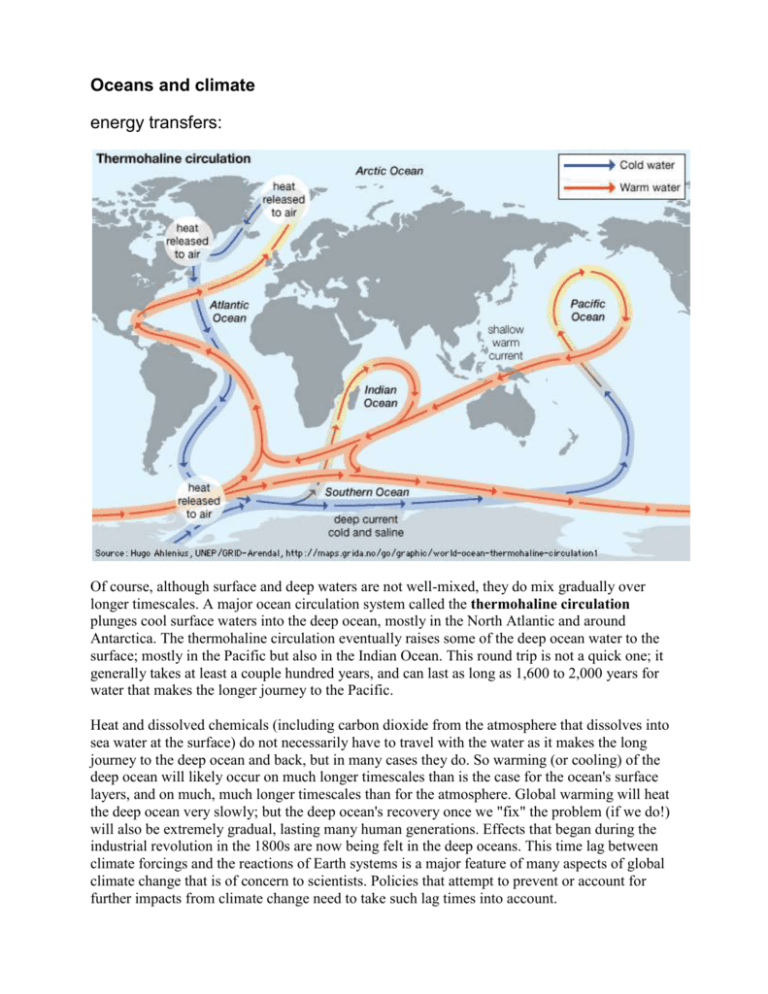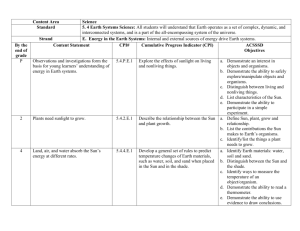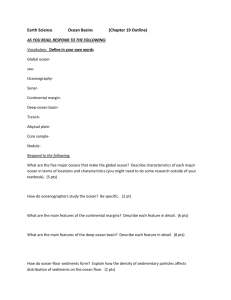thermohaline
advertisement

Oceans and climate energy transfers: Of course, although surface and deep waters are not well-mixed, they do mix gradually over longer timescales. A major ocean circulation system called the thermohaline circulation plunges cool surface waters into the deep ocean, mostly in the North Atlantic and around Antarctica. The thermohaline circulation eventually raises some of the deep ocean water to the surface; mostly in the Pacific but also in the Indian Ocean. This round trip is not a quick one; it generally takes at least a couple hundred years, and can last as long as 1,600 to 2,000 years for water that makes the longer journey to the Pacific. Heat and dissolved chemicals (including carbon dioxide from the atmosphere that dissolves into sea water at the surface) do not necessarily have to travel with the water as it makes the long journey to the deep ocean and back, but in many cases they do. So warming (or cooling) of the deep ocean will likely occur on much longer timescales than is the case for the ocean's surface layers, and on much, much longer timescales than for the atmosphere. Global warming will heat the deep ocean very slowly; but the deep ocean's recovery once we "fix" the problem (if we do!) will also be extremely gradual, lasting many human generations. Effects that began during the industrial revolution in the 1800s are now being felt in the deep oceans. This time lag between climate forcings and the reactions of Earth systems is a major feature of many aspects of global climate change that is of concern to scientists. Policies that attempt to prevent or account for further impacts from climate change need to take such lag times into account.











